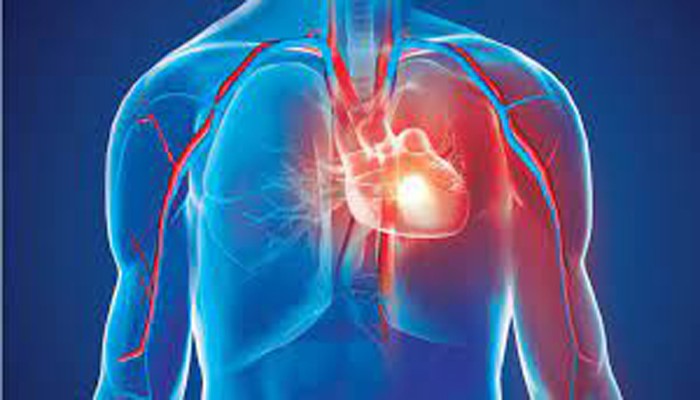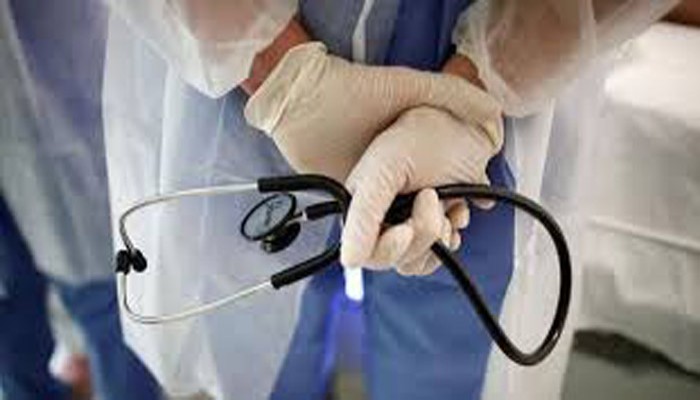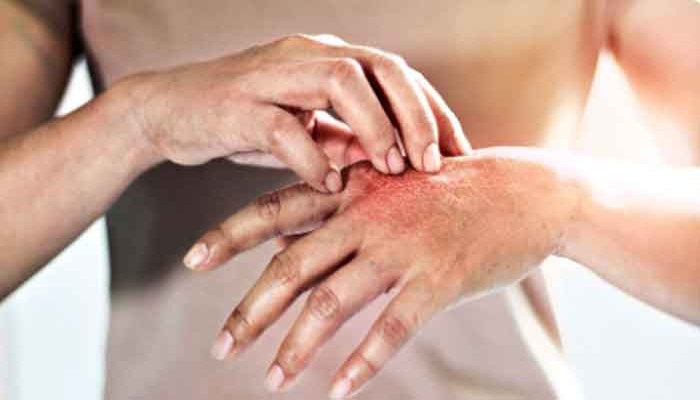Seniors or those who are middle-aged are more susceptible to suffering from this kind of diabetes. It was previously called adult-onset diabetes. Teens and children suffer from type 2 diabetes as well mostly due to childhood obesity.
The disease of diabetes is present in various forms. Type 2 diabetes is among the most prevalent. Type 2 diabetes affects approximately 29 million people across the United States. A further 84 million suffer from prediabetes which is high blood sugar levels, which could cause diabetes in the future ,
The signs for type 2 diabetes
It is difficult to recognize diabetes type 2 as it is a mild symptom. Eight million Americans are unaware they suffer from it. They're:
Thirsty
Many people use urination
Blur vision
Crankiness
Tingling or numbness in your hands or feet
weariness
Not-healing wounds
A yeast infection that is recurring
Getting hungry
If you don't try losing weight, you will lose it.
Infections on the rise
If you notice dark rashes on your armpits or neck You should consult your physician.
The causes of type 2 diabetes
The pancreas makes insulin. The enzyme is responsible for converting sugars, such as glucose in to fuel. Type 2 diabetes means that cells can't use insulin in a proper way even though they create insulin.
When glucose is first introduced to your cells, your pancreas creates more insulin. The body's ability to keep up and creates excessive glucose levels in the blood.
The combination of these factors is what causes the condition known as type 2 diabetes. The most common are:
Genetics. Researchers have found that the method by which the body produces insulin is influenced by various elements of DNA.
Extra weight. Insulin resistance is often due to overweight or obese people, especially when they have an extra burden around their midsection.
Syndrome metabolic. The high blood sugar level and the high blood pressure are also linked with insulin resistance. High cholesterol and triglycerides can also be.
A high level of glucose within the liver. In times of low blood sugar the liver releases and produces glucose. It is normal to slow down your liver following eating and allowing it to keep the glucose you consumed to use later. But not every liver is able to function as well after eating. Some continue to make sugar even after eating.
Cells do not communicate. Sometimes, cells fail to receive or send the proper signals. Chain reactions can begin when cells are unable to utilize glucose or insulin correctly.
Beta cells are damaged. Blood sugar levels can be affected when the cells that produce insulin aren't releasing the correct amount of insulin at the right period of time. In addition, hyperglycemia can harm the cells.
Type 2 Diabetes Risk Factors
Type 2 diabetes is more likely in the event of certain activities. You stand a higher likelihood of developing it when you are eligible in multiple. There are a few factors to consider:
Age over 45.
Diabetes sufferers in their families including siblings, parents or brothers.
These ethnic communities include African Americans, Alaska Natives, Native Americans, Asian Americans, Hispanic or Latino Americans along with Pacific Islander Americans.
Be aware of these elements in assessing your medical and health risk:
Prediabetes
Despite being controlled and treated the high blood pressure remains and can be a source of concern.
HDL cholesterol is low. HDL cholesterol.
Heart and blood vessel disease
Triglyceride levels are very high
Being overweight.
Depression
Being a parent of a child that weighed in excess of nine pounds
Gestational diabetes.
Ovarian polycystic
Your lifestyle and habits could increase your risk of developing diabetes. To avoid developing diabetes take note of these factors:
Being idle or doing some exercise
Smoking
Stress
Oversleeping or undersleeping
Typ 2 Diagnosis of Diabetes as well as Tests
Type 2 diabetes is diagnosed by tests on blood. Usually, they examine you for 2 days in order to verify the diagnosis. If you are experiencing any signs or symptoms, or have very elevated blood glucose levels, you might only require only one test.
A1c. Over the last two or three month, your blood glucose levels have been determined.
Plasma glucose levels during fasting. The measurement of blood sugar was done while when the body was at its most fast. The levels of blood sugar are determined prior to meals. The test takes about 8 hours from the time you last had a meal or drink, excluding water.
The oral glucose tolerance test (OGTT). The body's reaction to sweets can be monitored by monitoring your blood sugar levels prior to and after the consumption of sweets.
Type 2 Diabetes Treatment
It covers lifestyle changes and treatment for Type 2 Diabetes.
Changes in lifestyle
You can reach the blood sugar levels you want with exercise and diet.
Weight loss. Weight loss can be helpful. It's a good idea to lose at minimum 7% from your weight and maintaining it off. Thus losing 13 pounds can alter a person's 180-pound blood sugar level. Healthy eating and control of portion sizes are the first steps in losing weight.
Healthy eating habits. Type 2 diabetes does not require a special diet. Learn about carbs through a registered dietitian. You can also create a menu plan that you'll be able to stick to the help of. You must:
Calorie reduction
Reduce refined carbs at a minimum mainly sweets
Eat more fruits and vegetables.
Increasing fiber intake
Exercise. Spend 30-60 minutes each day participating in physical exercise. If you want to increase your blood flow go for a bike ride, walk or even swim. Include strength training such as lifting weights or yoga, following. Prior to working out you may need to eat something to fuel your body in the event that you are taking medications that decrease your blood sugar.
Monitor your blood sugar levels. The frequency and kind of tests for blood sugar you have to perform will depend on your medication, and especially those who are taking insulin.
Type 2 Diabetes Prevention
You can lower your risk of developing diabetes by pursuing an active and healthy lifestyle.
Lose weight. If you can lose only 7-10 percent in weight your chance of developing type 2 diabetes is reduced by half.
Get active. Nearly one-third of the risk of developing cancer is decreased with 30 minutes vigorous walking each day.
Make sure you eat healthy. Reduce the amount of sugar you consume as well as trans fats and processed carbohydrates. Stay clear of processed meats or red meat.
Do not smoke. Ask your physician for advice regarding weight loss following quitting smoking so that you don't create problems by trying to solve another.
Type 2 Diabetes Complications
If blood sugar stays elevated for a prolonged period there are the following signs that occur:
It is more likely that you will develop heart disease and strokes when you smoke. You also have a high risk of developing atherosclerosis and chest discomfort (angina ).
When your kidneys stop working, or become damaged, you might require dialysis or a transplant.
The high blood sugar levels could harm the small blood vessels that surround the eye. It can cause death if not dealt with correctly.
The symptoms include digestive issues as well as changes in your foot sensation and sexual problems.
In the end, you'll experience lower rates of healing wounds, as well as a higher risk to become infected.
Stillbirths, miscarriages as well as congenital disability are all more likely be a problem for women who suffer from diabetes.
When you are asleep the breathing stops completely.
It is not clear the reason why you are more likely to suffer from hearing issues.
Alzheimer's disease may be more common in those who have high blood sugar levels.
The disease can increase the risk of depression two times as high as the rate of people who are not affected.
If diabetes isn't appropriately managed, there may develop complications similar to these.
Follow the instructions provided on the packaging will enable you to use the insulin or diabetes medication in the correct way.
Maintain a healthy blood sugar level.
Don't skip meals and eating healthy food.
Visit your doctor regularly to check for signs of the illness.
Summary
A balanced diet that includes vegetables, fruits and whole grains that are high in fiber , and low fat may assist in controlling your blood sugar. The fiber-rich foods aid in stabilizing your blood sugar levels because their glycemic indexes are low. A diet high in foods with a glycemic index like meat, processed foods and sweets, can raise blood sugar quickly.
The low blood sugar level can be controlled by regular physical exercise. Do 30 minutes of exercise a day for example walking, swimming or cycling, every day as well as some exercises to strengthen your muscles at least once a week.
If aerobic exercises are paired with resistance-training like weightlifting and yoga can be more effective at regulating glucose levels, than one kind of exercise on its own.
The combination of losing weight and working out can help keep the proper blood sugar levels.
It is because losing weight will boost insulin production and aid your body to use insulin more effectively. A loss of 10% of the body's weight can help in lowering the levels of blood sugar if you're obese or overweight.
Certain people are able to totally reverse Type 2 diabetes through diet exercising, exercise, or weight reduction, but not everyone can achieve this. It could be possible to increase the levels of your blood sugar, decrease your prescriptions and decrease the chance of complications when you aren't able to stop Type 2 diabetes altogether.




























